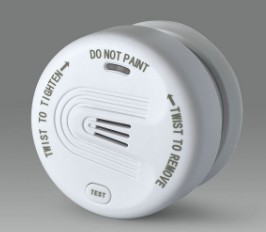Choosing the right placement for mini smoke alarms in s […]
Choosing the right placement for mini smoke alarms in small spaces is crucial for ensuring the safety of your home and its occupants. While small spaces may present unique challenges for smoke alarm placement, careful consideration of factors such as layout, potential fire hazards, and manufacturer recommendations can help you determine the most effective locations.
First and foremost, it's essential to understand the purpose of smoke alarms: to provide early warning of a fire so that occupants can safely evacuate the premises. With this in mind, the goal of smoke alarm placement is to ensure comprehensive coverage throughout the home, minimizing the risk of undetected fires.
One fundamental principle of smoke alarm placement is to have alarms installed on every level of the home, including basements and attics. Even in small spaces, such as studio apartments or tiny houses, it's critical to have smoke alarms strategically positioned to provide maximum coverage.
When deciding on specific placement locations within small spaces, there are several key considerations to keep in mind. First, prioritize areas where people spend the most time, such as bedrooms and living areas. For example, in a studio apartment, consider placing a smoke alarm near the sleeping area and another in the main living space.
In bedrooms, it's important to install smoke alarms both inside the room and in the hallway outside. This ensures that occupants are alerted promptly if a fire occurs, regardless of whether they are awake or asleep. Additionally, smoke alarms should be positioned near potential escape routes, such as staircases or hallways leading to exits, to provide early warning and facilitate safe evacuation.
Mounting height is another crucial factor to consider when installing smoke alarms. Mini smoke alarms should be mounted high on walls or ceilings, as smoke rises during a fire. Ceiling mounting is typically recommended, but if ceiling installation is not feasible due to the layout of the space, wall mounting is an acceptable alternative. Ensure that smoke alarms are positioned away from air vents, windows, or doors where drafts could interfere with their performance.
Furthermore, it's important to follow the manufacturer's guidelines and instructions for smoke alarm placement. Manufacturers often provide specific recommendations regarding placement, spacing, and mounting height to ensure optimal performance. Be sure to consult the manufacturer's instructions for your specific smoke alarm model and follow their recommendations closely.
In small spaces, such as RVs or boats, where traditional smoke alarm placement may be challenging, consider using interconnected smoke alarm systems. Interconnected smoke alarms communicate with each other wirelessly, so when one alarm detects smoke, all alarms in the network sound simultaneously. This provides additional warning and ensures that occupants are alerted no matter where they are in the space.
Once smoke alarms are installed, it's crucial to test them regularly to ensure proper functioning. Most smoke alarms have a test button that allows you to check the alarm sound and battery status. Replace batteries as needed and replace the entire unit according to the manufacturer's recommendations.
In conclusion, choosing the right placement for mini smoke alarms in small spaces requires careful consideration of factors such as layout, potential fire hazards, and manufacturer recommendations. By strategically positioning smoke alarms throughout the home and following best practices for installation and maintenance, you can enhance the safety of your home and protect its occupants from the dangers of fire.